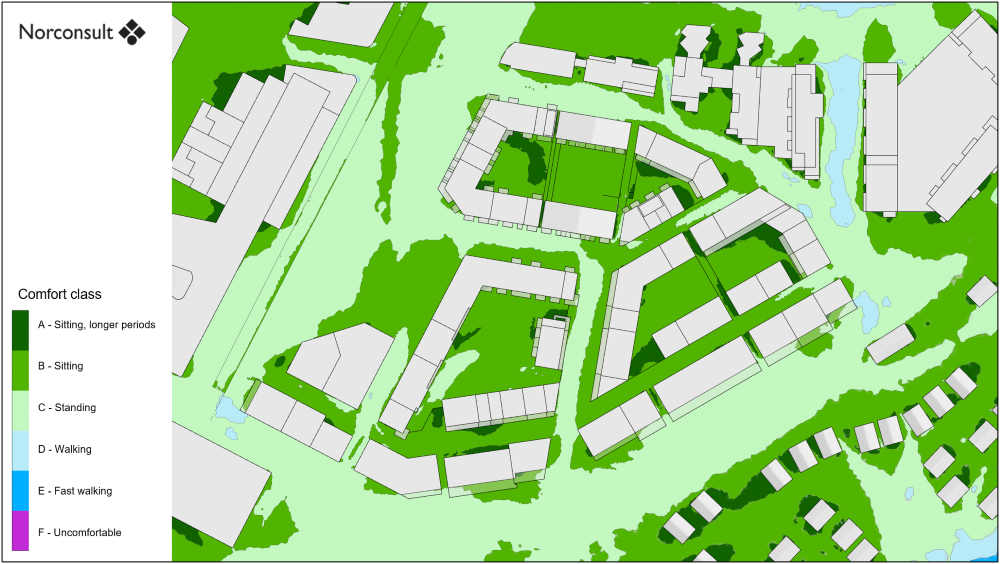Buildings may have a large impact on the local wind in urban areas and the way it is experienced by people. Facades can lead wind from up high down to street level as well as accelerate it around building corners, causing high wind speeds and undesired turbulence. Streets or passages between neighbouring buildings can act as wind tunnels, even on days with good weather. Such effects can significantly affect the useability of the area. Places such as building entranceways, common outdoor areas, footpaths, and roof terraces are examples of areas that are potentially vulnerable to adverse wind effects and poor wind comfort.
Today, our wind comfort analyses are a result of the collaboration between two departments within the Norconsult Group; the department of Kjeller Vindteknikk and the department of CFD and Applied Fluid Dynamics. The CFD (“Computational Fluid Dynamics”) department contributes with their competence and long experience with 3D simulation tools, and Kjeller Vindteknikk contributes with their competence in weather modelling, meteorology, accurate wind statistics, and detailed field measurements.
By creating a 3D CFD model of the building(s) of interest, the surrounding buildings, and the local terrain, we can simulate how the wind is affected by the surroundings and how it moves over and around the relevant building volumes. By processing the simulation results together with the local wind statistics, internationally recognized wind comfort criteria are calculated and used to map the area into comfort zones. Planned land use and areas of well-being can be assessed against wind comfort classes, which makes it possible to customize solutions or building design as needed.
Please do not hesitate to contact us for further information!
